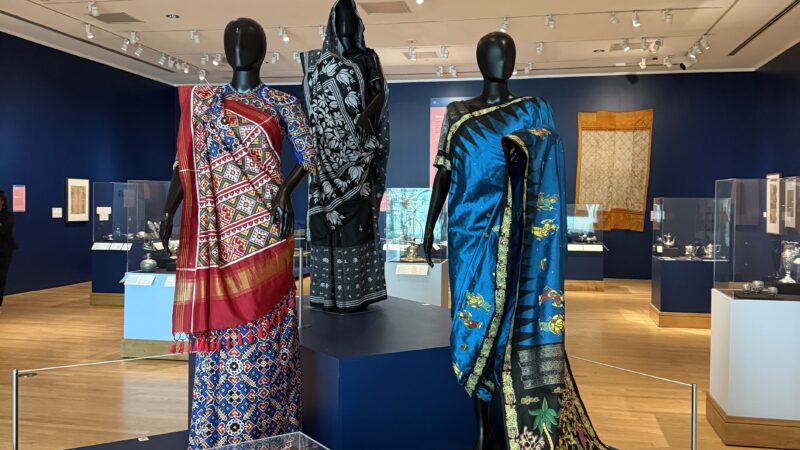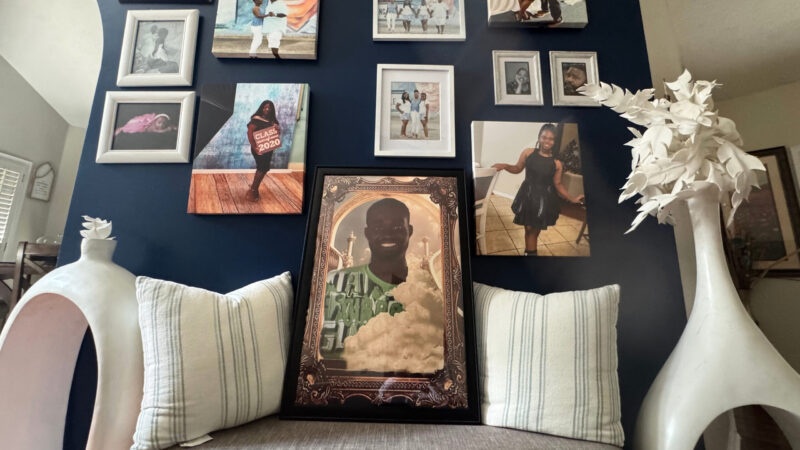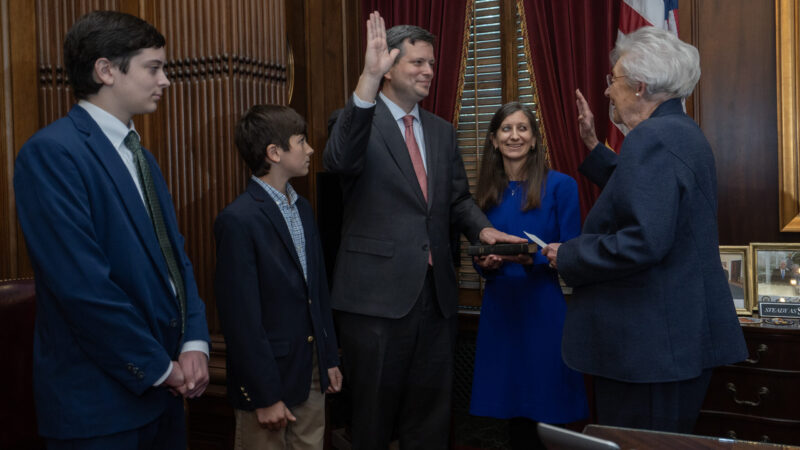EarFlims: To Sleep To Dream
You know how people often say the book is better than the movie because you can create your own pictures? The same thing is true for audio. A new show with its American debut Tuesday at UAB’s Alys Stephens Center puts that notion to the test.
To Sleep to Dream is a production of the United Kingdom-based EarFilms. It’s like a feature-length movie told only with sound.
Daniel Marcus Clark is founder of the company. Clark had been a storyteller and a composer, but he felt there was something missing from most audio drama. He wondered, what if you made sound the primary storyteller?
“What can you tell about a character by the way they breathe, by the way they enter a room, by the way they sit, by the way they hold themselves?” Clark asked. “So aside from dialogue, aside from narration, how much of a story can we tell just using sound?”
So Clark wrote To Sleep To Dream, a tale of a future, dystopian world where one corporation controls everything and dreams are illegal.

EarFlims founder Daniel Marcus Clark will narrate the show live from this podium. He likes to deliver the lines with his eyes closed so he can experience the show as the audience does.
To appreciate the scope of production, it helps to understand the technology. You’re probably familiar with stereo sound. That’s two speakers. A typical surround sound system will have five. This set up?
“There’s 21 speakers in the set up,” said Clark.
They’re placed like a dome around the audience. So they can make the audio appear to move around and above the audience. It’s a 3-D sound system.
“It gives a kind of, a much richer kind of feeling,” said Clark. “It’s more akin to the way that we listen in the natural world.”
The other thing to consider is the number of tracks. A typical radio story may have two to four tracks — the reporter’s voice, the sound bites, and some other sound gathered from the scene. A recording of a band may have thirty to fifty tracks.
In To Sleep to Dream there are more than 6,000 audio tracks.
“Actually that’s six thousand tracks of audio before we put score in and actors,” said Clark.
One other important detail — the audience is blindfolded. There’s nothing to do but listen and imagine.

EarFilms’ spectral sound director Chris Timpson examines his laptop as he calibrates the speakers for the show.
“You feel like you’re in the middle of a film as opposed to watching a film,” said Eric Essex, Director of Programming at the Alys Stephens Center.
He was part of a group that saw an excerpt of To Sleep To Dream at an industry preview in New York. He was fascinated by the varied experiences people had.
“You know, some people saw the film in color,” said Essex. “Some people saw in black and white. Some people saw it in first person and some people saw it as if you were watching a film on the screen.”
From there, the Stephens Center invited EarFilms to bring the show to Birmingham for its U.S. debut. Essex says that’s an opportunity to become your own filmmaker.
“You’ve got all the audio,” said Essex. “The storyline is there. Use your mind and your imagination to create your own visuals of this film.”
That is, if that’s what you’ve been dreaming of.
A proposed Bessemer data center faces new hurdles: a ‘road to nowhere’ and the Birmingham darter
With the City Council in Bessemer scheduled to vote Tuesday on a “hyperscale” data center, challenges from an environmental group and the Alabama Department of Transportation present potential obstacles for the wildly unpopular project.
Birmingham Museum of Art’s silver exhibit tells a dazzling global story
Silver and Ceremony is made up of more than 150 suites of silver, sourced from India, and some of their designs.
Mentally ill people are stuck in jail because they can’t get treatment. Here’s what’s to know
Hundreds of people across Alabama await a spot in the state’s increasingly limited facilities, despite a consent decree requiring the state to address delays in providing care for people who are charged with crimes but deemed too mentally ill to stand trial. But seven years since the federal agreement, the problem has only worsened.
Ivey appoints Will Parker to Alabama Supreme Court
Parker fills the court seat vacated by Bill Lewis who was tapped by President Donald Trump for a federal judgeship. The U.S. Senate last month confirmed Lewis as a U.S. district judge.
How Alabama Power kept bills up and opposition out to become one of the most powerful utilities in the country
In one of the poorest states in America, the local utility earns massive profits producing dirty energy with almost no pushback from state regulators.
No more Elmo? APT could cut ties with PBS
The board that oversees Alabama Public Television is considering disaffiliating from PBS, ending a 55-year relationship.








